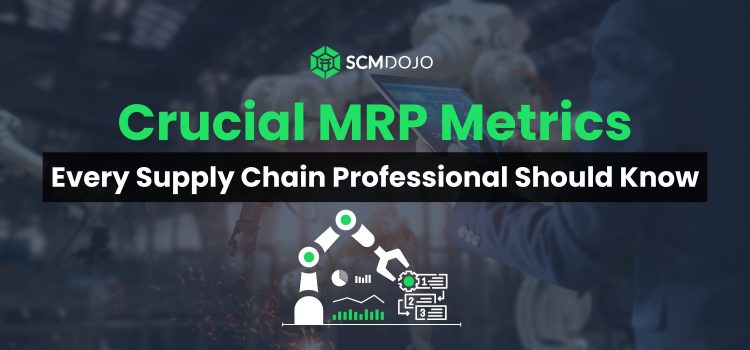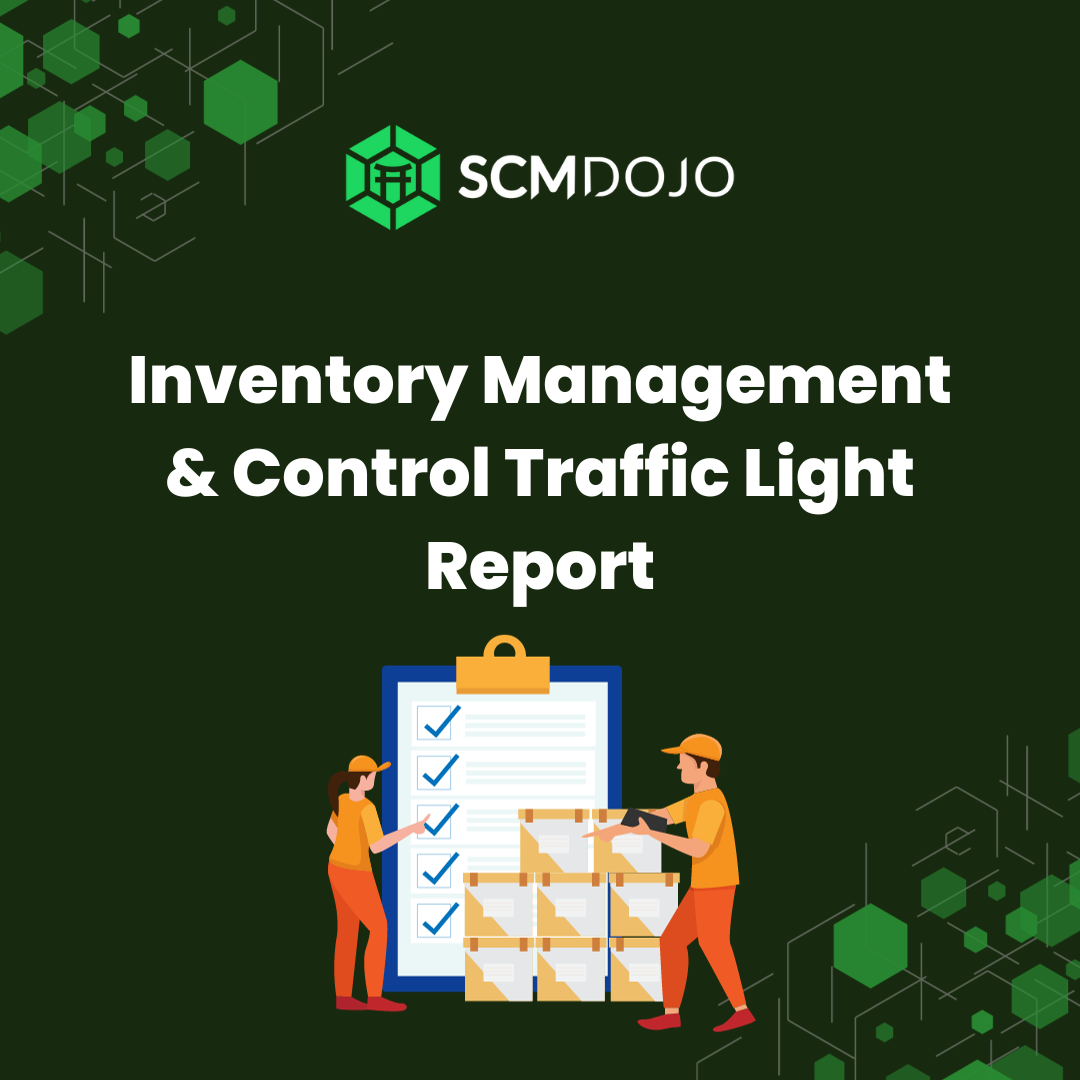This blog explains The Key MRP Metrics in Supply Chain whcih every supply chain professional in Manufacturing or Distribution Businesses. Supply chain professionals will be familiar with the term Material Requirements Planning (MRP). This is a fundamental principle of supply chain management, it constitutes a juggling act that is at the heart of any well-orchestrated manufacturing process.
The metrics that underpin MRP could be described as the balls in this juggling act. Understanding these metrics is critical for ensuring that production runs smoothly, inventories are optimized, and customer demands are met.
This article takes an in-depth look at the crucial metrics every supply chain professional needs to know.
The Importance of MRP in Supply Chain
Effective MRP is critical in the modern manufacturing sector. It is a fundamental process in successfully navigating supply chain and operational challenges. The supply chain should be a smooth-flowing entity, with enough leeway to ride out unforeseen circumstances, but not enough to tie up capital in excessive inventory or resources.
MRP plays a pivotal role in achieving this balance:
- Inventory Optimization: MRP ensures that businesses have just the right amount of inventory—neither too much that it leads to increased holding costs, nor too little that it disrupts production.
- Cost Efficiency: By accurately forecasting material requirements, MRP helps in bulk purchasing and availing discounts, leading to cost savings.
- Enhanced Production Scheduling: MRP clarifies when to start production processes, ensuring timely delivery to customers and reducing lead times.
- Resource Allocation: With MRP, businesses can allocate resources more effectively, ensuring that machinery, labour, and materials are used efficiently.
- Risk Mitigation: By providing insights into potential shortages or overstocks, MRP allows businesses to take proactive measures, reducing risks associated with supply chain disruptions.
Overall, MRP is as essential for securing an effective and efficient supply chain as cyber and physical security protecting a business. By integrating MRP systems, companies streamline their operations and position themselves more responsive to market changes.
The metrics at the heart of MRP are wide and varied, but understanding them and their role is key to efficient supply chain management.
The Key MRP Metrics in Supply Chain Management
MRP in supply chain management might seem like a complex topic. However, the term MRP is an umbrella term that can be broken down into various key responsibilities. Each of these responsibilities is guided by specific metrics, acting as the pillars that support the entire MRP structure.
Juggling these metrics can be challenging, but the first step in rising to the challenge is understanding each one and its significance in supply chain management and the manufacturing process.
Gross Requirements
At the heart of MRP lies the concept of Gross Requirements. Think of it as the total wishlist of materials and parts needed to fulfill production goals.
- Definition: Gross Requirements represent the total expected demand for an item before considering any existing inventory or scheduled deliveries. A good analogy is to compare it to planning a large meal and listing all the ingredients you’d ideally need, without first checking what ingredients you already have.
- Role in MRP: This metric serves as the starting point of the MRP process. Businesses can accurately forecast their purchasing needs by determining the total demand for materials. Furthermore, production schedules can be clearly outlined, ensuring that potential bottlenecks or shortages are identified early on.
Gross Requirements provide a comprehensive overview of what’s needed, setting a foundation for more detailed planning and adjustments based on actual inventory and other influencing factors.
Net Requirements
Next, we encounter Net Requirements, which refines our understanding of material needs by accounting for what’s already available.
- Definition: Net Requirements calculate the amount of materials or parts needed after considering the current inventory and scheduled deliveries.
- Role in MRP: This metric is crucial for precision in the MRP process. It ensures businesses produce or purchase only what’s necessary, avoiding overstocking or understocking. This precision leads to cost savings, efficient use of resources, and timely production.
In a nutshell, Net Requirements fine-tune the material demands, ensuring that businesses operate with optimal efficiency and responsiveness.
Planned Order Releases
The significance of Planned Order Releases within the MRP framework cannot be overstated. This metric ensures that production and purchasing activities are timely and efficient. These metrics ensure that production and purchasing activities are timely and efficient, serving as a focal point in the juggling act of supply chain management.
- Definition: Planned Order Releases determine the specific future date when a production or purchase order should be initiated, setting clear timelines for when materials or parts should be ordered or produced.
- Role in MRP: By pinpointing the exact dates to kickstart production or place orders, this metric ensures materials are available when needed and aligns production activities with demand cycles, optimizing the entire manufacturing process.
Planned Order Releases act as the strategic calendar for manufacturing, guiding businesses to operate with precision and foresight.
Scheduled Receipts
Scheduled Receipts play an indispensable role in MRP. It ensures that incoming inventory is accurately accounted for and seamlessly integrated into the planning process.
- Definition: Scheduled Receipts refer to the quantities of a specific item that are expected to be received in the future, based on previously placed orders. This provides a tangible timeline for when materials or components will be available for use.
- Role in MRP: By accounting for incoming materials or parts with Scheduled Receipts, businesses can adjust production schedules and ensure that storage and processing capacities are optimally utilized. This proactive approach minimizes disruptions and enhances the overall efficiency of the supply chain.
Scheduled Receipts offer a clear lens into the future inventory landscape, equipping businesses with the insights needed to streamline their operations and respond proactively to incoming stock.
Available Inventory
Available inventory is one of the pivotal metrics in MRP, reducing inventory levels helps to free up space and capital. MRP can play a pivotal role in maintaining a healthy inventory level.
- Definition: Available Inventory represents the actual stock in hand, taking into account both current items and those anticipated from Scheduled Receipts, after deducting the Gross Requirements. It’s a real-time snapshot of the materials or parts that are immediately accessible.
- Role in MRP: With insights from Available Inventory, businesses can gauge their production capabilities and determine if additional orders are necessary. It ensures that operations align with actual stock levels, preventing overproduction and underproduction scenarios.
Available Inventory acts as the grounding force in the MRP process, ensuring that manufacturing decisions are rooted in tangible data, leading to more efficient and responsive operations.
The Importance of Accurate MRP Metrics
The old adage of Garbage In, Garbage Out, is incredibly relevant in the world of MRP. For a system that relies heavily on data-driven decisions, the quality and accuracy of the input metrics are paramount. Inaccurate metrics can lead to a cascade of issues throughout the supply chain, affecting both efficiency and profitability.
- Operational Disruptions: Inaccurate data can result in production halts, overstocking, or stockouts, leading to delays and potential loss of business.
- Financial Implications: Misjudged metrics can lead to unnecessary expenditures through excess inventory holding costs or emergency procurement.
- Customer Satisfaction: Inaccurate forecasting based on flawed metrics can lead to missed delivery dates, affecting customer trust and loyalty.
- Resource Misallocation: Without accurate metrics, resources such as labor, machinery, and storage might be inefficiently allocated, leading to wastage and increased operational costs.
Ultimately, the accuracy of MRP metrics is the foundation upon which a successful and efficient supply chain is built. Ensuring precision in these metrics is not just about avoiding pitfalls; it’s about optimizing operations, maximizing profitability, and delivering consistent value to customers.
Modern Tools and Software for MRP
MRP is a complex ballet that requires precision, coordination, and timely execution. As the demands of global supply chains grow and evolve, traditional methods of MRP can fall short. Enter modern tools and software, designed to enhance, streamline, and revolutionize the MRP process.
- Real-time Data Analysis: Modern MRP software offers real-time data analysis, allowing businesses to make informed decisions instantly. This reduces lag time and ensures that decisions are based on the most current information available.
- Cloud-based Solutions: With cloud-based MRP systems, businesses can access their data from anywhere, ensuring continuity and flexibility. This is especially crucial in today’s globalized world where teams might be spread across different continents.
- Integration Capabilities: Modern tools can seamlessly integrate with other enterprise systems like CRM, sales, and finance. This holistic approach ensures that all departments are aligned and working from the same data set.
- Predictive Analytics: Advanced MRP software harnesses the power of AI and machine learning to forecast future trends, helping businesses anticipate market shifts and adjust their strategies accordingly.
- User-friendly Interfaces: Gone are the days of clunky software. Modern MRP tools come with intuitive interfaces, making it easier for teams to adopt and utilize them effectively.
Technological advancements have transformed the workings of MRP. Modern tools and software simplify MRP’s intricate dance and empower businesses to be more agile, responsive, and competitive.
MRP: A Critical Metric in its Own Right
Supply chain management is a complex multifaceted blend of skills, tools, techniques and the occasional touch of diplomacy. In this landscape, MRP stands out, not just as a system but as a critical metric in its own right. It’s the linchpin that ensures seamless operations, optimal resource allocation, and timely production. As we’ve explored, understanding and leveraging MRP metrics is paramount for businesses aiming for efficiency, agility, and sustained success.



